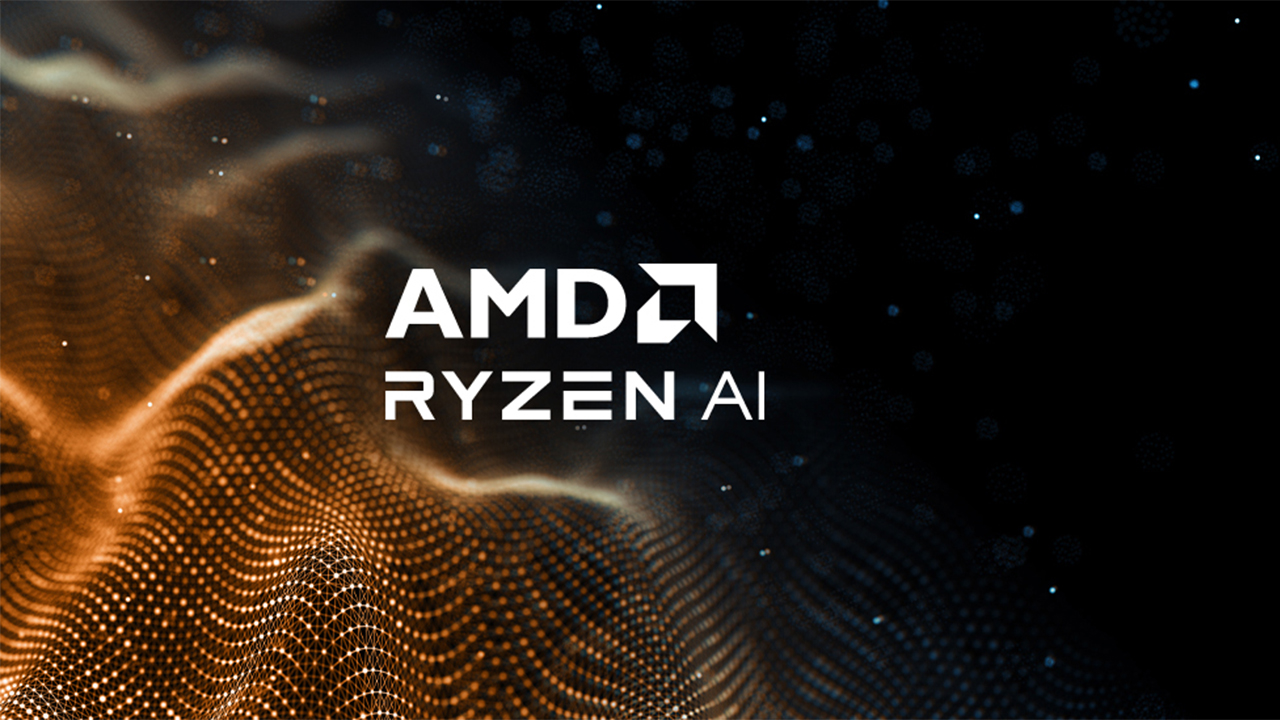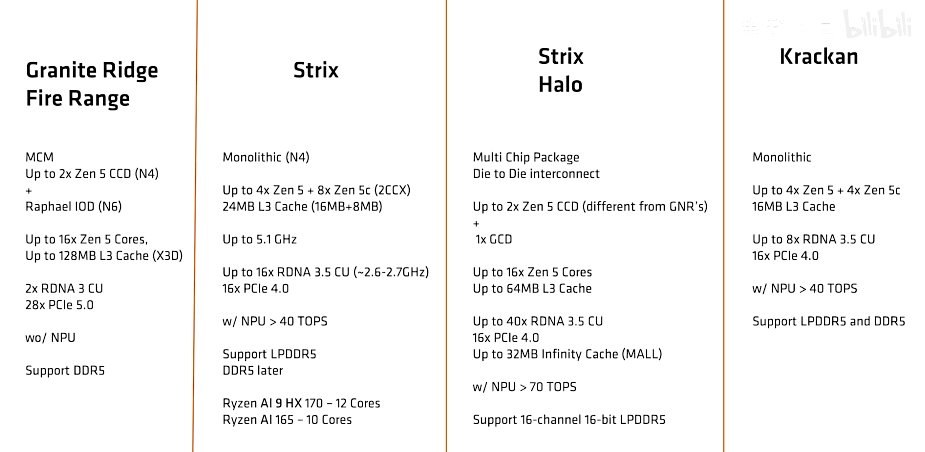
AMD fans, rejoice, because according to an enormous leak from Golden Pig Upgrades on Bilibili, AMD's Zen 5 architecture is going to be exciting. The leaker, whose leaks have repeatedly proven true, now drops another bombshell containing info on all levels of AMD's new architecture to be released in the second half of 2024.

Much of the leak corroborates or confirms previous leaks, like this shipping manifest that highlighted Granite Ridge desktop CPUs, Strix Point APUs, and Fire Range mobile CPUs with matching specs to Golden Pig's. New information in this leak hinges on a previously unknown 10-core Strix Point called the "Ryzen AI 165". The leak also features its big brother, the "Ryzen AI 9 HX 170", a chip whose existence was confirmed by Asus spilling some of its upcoming laptop spread on Tuesday. Both Strix Point APUs will combine Zen 5 and Zen 5c cores, and are due to ship with both an on-board NPU and 16 RDNA 3.5 graphics cores, attacking AI workflows from two directions.
The rest of the leak seems to confirm other reports released in the last month or so, like April's reports of the Strix Point Halo Mobile APU. Strix Halo is set to be a beast built fully on Zen 5 that will decimate Strix Point's performance. The APU will be a multi-chip package with 2 unique CPU dies (CCDs) and 1 graphics die, with its CPU dies entirely made up of Zen 5 cores — up to 16 cores. Its graphics capabilities on paper will double its sibling's, containing 40 RDNA 3.5 cores (more than a PS5) and a bonus NPU running almost twice as many TOPS as Strix Point - 70 TOPS vs 40. Strix Halo is sure to be a major feat of processing at release, likely limited to a scant few ultra-high-end releases like Apple's Ultra chips.
Granite Ridge, AMD's codename for its Zen 5 desktop CPUs, seems it will share specs heavily with Fire Range, a mysterious new mobile lineup first revealed in leaks back in March. These processors will be MCMs (multi-chip modules) with up to two Zen 5 CCDs combined with an IOD on the N6 node. The Granite Ridge/Fire Range processors will reach as high as 16 cores — intriguing, as Zen 5 can theoretically fit 16 cores on a single CCD, making 32-core Zen 5 chips possible for this generation. L3 Cache will reach 128MB on a potential X3D release.
An interesting wrinkle to the leak is that Granite Ridge and Fire Range are set to contain two RDNA 3 compute units onboard, but this seemingly conflicts with the claim that the architecture will reuse the Raphael IOD, which ran RDNA 2 CUs. So either a refreshed Raphael IOD is in order, or a typo in the leak sprung up. Neither Granite Ridge or Fire Range will contain an NPU, leaving the AI-specific chips for the mobile spread once again. Fire Range on laptops will likely utilize external graphics to meet its high-powered CPU speeds.
The leak finally focuses on Kraken Point (spelled "Krackan" here), AMD's laptop APUs set to release in 2025. Kraken Point is set to replace the Ryzen 8000-series, codenamed Hawk Point, and will live just beneath Strix Point's performance range. A monolithic chip package like Strix Point, Kraken Point will run a bit leaner with a maximum of 8 CPU cores (4 Zen 5 + 4 Zen 5c) compared to Strix's maximum of 12. This will also come with a lower L3 cache of 16 MB vs Strix's 24 MB. Kraken Point will halve its number of RDNA 3.5 CUs to 8 and contain an NPU that will match the performance of Strix Point's at 40 TOPS.
The Zen 5 architecture is on the horizon, with the first releases due in late 2024. With an incredible spread of mobile processing options — Kraken Point for lower power APUs, Strix Point for more intense graphics and AI workflows with Strix Halo at its peak, and Fire Range for pure unadulterated CPU performance — consumers and manufacturers alike will be spoiled for choice.







